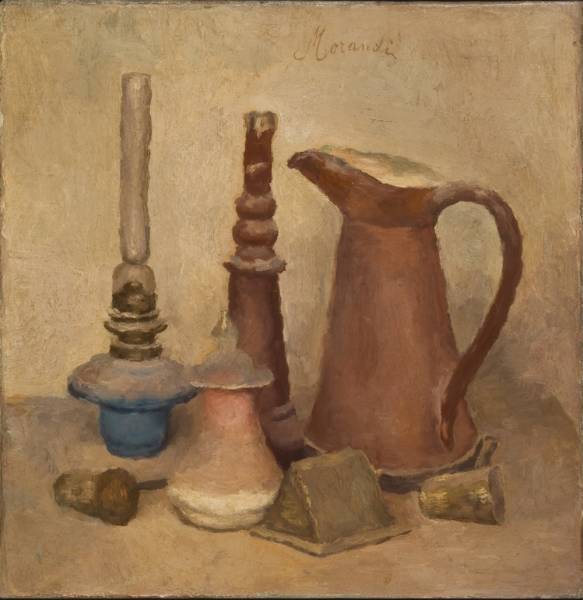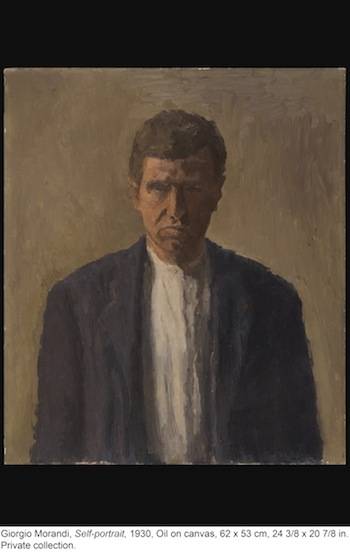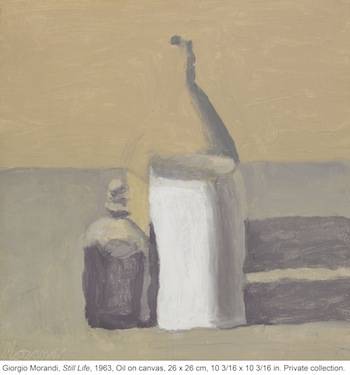Giorgio Morandi at CIMA: The Poetics of an Italian Modernist
Over fifty works, several of which have not been seen in the US in decades, will be on display at CIMA’s retrospective dedicated to modernist Giorgio Morandi, including paintings, etchings and drawings, giving viewers the opportunity to admire the light and rigor of Morandi’s art. Among the most important works is his rare oil-on-canvas self- portrait, Autoritratto, 1930, which was last displayed in the U.S. 40 years ago.
The painting denotes the artist’s increasing interest in abstraction and materiality over representation. Major public and private international collections in Italy were fundamental to launching the show, including Collezione Mattioli, Museo di Arte Moderna e Contemporanea di Trento e Rovereto, Fondo Ambiente Italiano and MAMbo (Museo d’Arte Moderna di Bologna).
The 1930s and the 1960s
“You won’t find a biographical-anthological show at CIMA,” explains CIMA’s founder and president Laura Mattioli. “There will be a focus on the period of the 1930s, which, though unknown abroad, anticipates the most important evolutions in the painter’s art. And, for contrast, next to that period we’ll be placing his very last works from the 1960s.”
The curatorial choice attempts to highlight the most countercultural, contemporary aspects of Giorgio Morandi’s activity and the formative role the latter had on minimalist and conceptual art of the postwar period. “In the 1930s, Morandi mainly used a dark palette, enlivened by a few, violent chromatic contrasts and a thick mixture of colors in which traces of the paintbrush are clearly visible,” says Mattioli. “In the last three years of his life, on the other hand, the artist uses very soft and luminous colors, which he applied with transparent, almost liquid but still visible strokes. They would appear to be two contradictory pictorial styles, but in reality both form part of a single, cohesive discourse on painting.”
Morandi in the U.S.
Like the other artists shown at CIMA, Giorgio Morandi had ties to New York and its inhabitants. During the 1920s he had the good fortune to regularly exhibit his etchings in Pittsburgh, which brought him notoriety in the US during the postwar period. Despite keeping his distance from the world of salons and his love of solitude, Morandi directly influenced many artists, particularly minimalists and conceptualists. His watercolors, geometric boxes and flowers expressed an anguished and lyrical look at reality that captivated intellectuals and artists, like Agnes Martin, who, Mattioli explains, “saw one of the Bolognese master’s watercolors acquired by a friend of hers at the 1959 Venice Biennial.”
“I believe that giving a more international reading of an artist erroneously considered ‘provincial’ because he didn’t travel much - and almost exclusively within Italy - is important for the art history of the world,” says Mattioli.
“I think that Morandi is still only partially understood in the US and generally, both in Italy and abroad. For a long time his work was exclusively interpreted as the continuation of the highest tradition of Italian painting, which was Roberto Longhi’s reading of him. It’s no coincidence that in the last decade many exhibitions on Morandi – including the one in New York at the Metropolitan Museum – were curated by Dr. Maria Cristina Bandera, director of the Longhi Foundation and niece of Longhi’s student, Mina Gregori.”
To broaden our interpretation of the Bolognese maestro, CIMA has invited artists to speak to the public about the works on display, and thus bring to light the modernity and rigor of one of the greatest exponents of 20th-century Italian painting.




































i-Italy
Facebook
Google+
This work may not be reproduced, in whole or in part, without prior written permission.
Questo lavoro non può essere riprodotto, in tutto o in parte, senza permesso scritto.